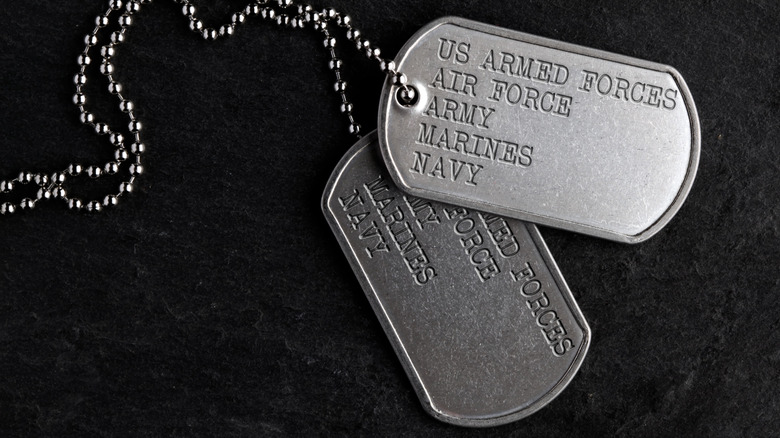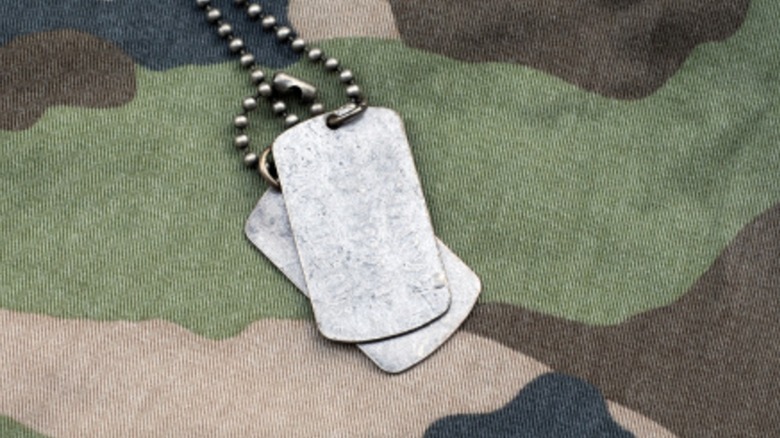How Did Dog Tags Get Their Name In The Military? (And Are They Still Used?)
One of the gruesome realities of war is that people die, and they often do so after sustaining a great deal of damage. Even with American Flags on their uniforms, it's often difficult to identify casualties. Without getting too much into the details, it's not uncommon for a person to be wounded beyond the ability to identify them, so to combat this problem, militaries around the world have come up with solutions. The one known most in the United States is the so-called "Dog Tag," which every servicemember receives in Basic Training, and they must keep them on their person throughout their time in uniform.
The story goes that they received the moniker from newspaper magnate William Randolph Hearst in 1936. Of course, the practice goes back further, as the U.S. began unofficially using identification tags during the Civil War, as people wanted to avoid being buried in unmarked graves, as was common at the time. The soldiers began the practice themselves, so it didn't come from higher-ups to wear tags. Because of this, soldiers would carve their names in wood they'd wear around their necks or write their names on their gear and clothing.
By the end of the conflict, over 40% of Union casualties were unidentified, further demonstrating a need for a solution. Finally, in 1899, a chaplain in charge of the Army Morgue and Office of Identification in the Philippines recommended all soldiers wear identification tags, and by 1906, it became official. Initially, U.S. military identification tags were military-grade disks about the size of a half-dollar. They bore the servicemember's name, rank, and unit information. These were worn about the neck via a chain or cord.
The Dog Tag
While the U.S. had used identification tags for decades, it wasn't until 1936 that William Randolph Hearst came up with the term they're best known for today. Hearst hoped to undermine President Franklin D. Roosevelt's New Deal and the newly formed Social Security Administration, which he opposed. The SSA was planning on handing out nameplates for identification that would bear their number, and Hearst referred to these as "dog tags," comparing them to those worn by servicemembers since the turn of the century.
That only one of the rumored origins of the term "dog tag." Another says that WWI soldiers referred to their identification tags as such because they were treated like dogs. Another rumor compared them to the tags worn by dogs. Whatever the origin of the term, you'd be hard-pressed to find a single servicemember who doesn't call them dog tags, as that's what they've been called for around a century. Servicemembers continue to receive dog tags during Basic Training, and if they lose them, it's their responsibility to replace them.
They can do this at their unit or most military surplus stores around the country. It's also possible to have them made online by various retailers, so they're readily available. Modern dog tags are oval and feature the servicemember's name, DoD ID number, blood type, and religious preference, though their stamped info varies from branch to branch. It's a common practice to affix one to the bootlaces and the other is worn around the neck while deployed.

